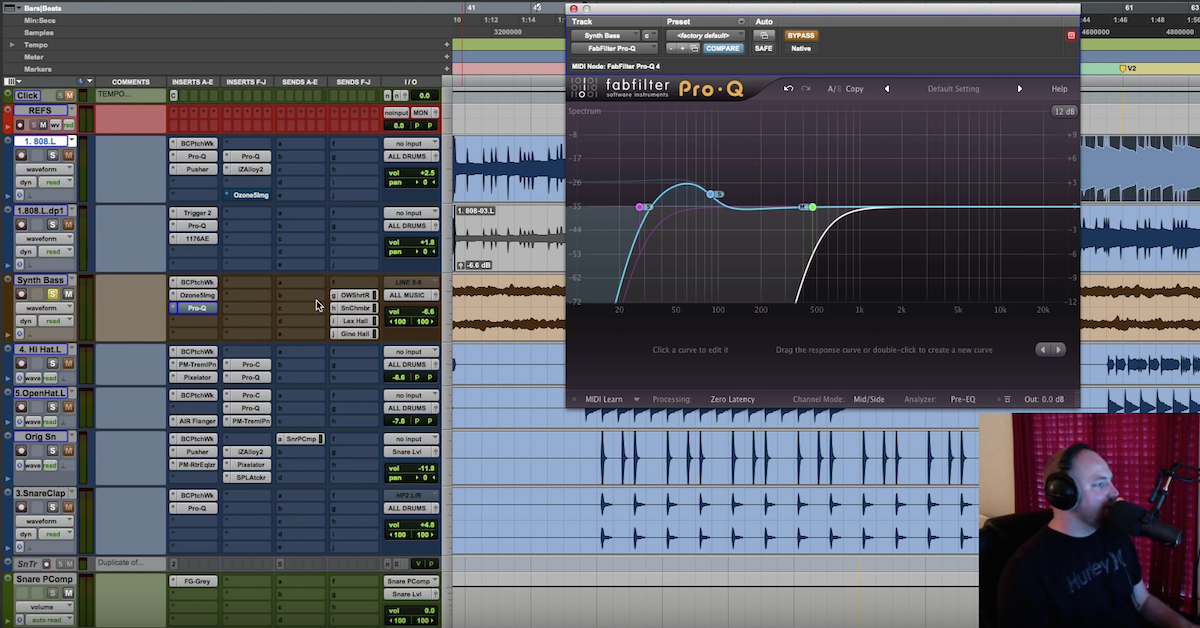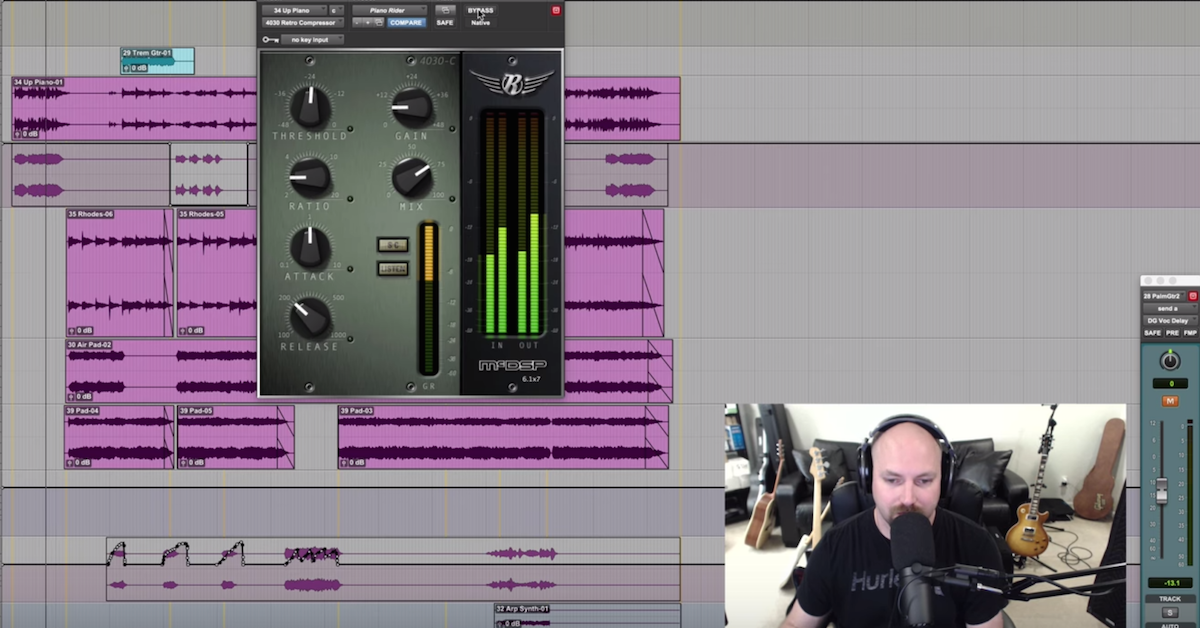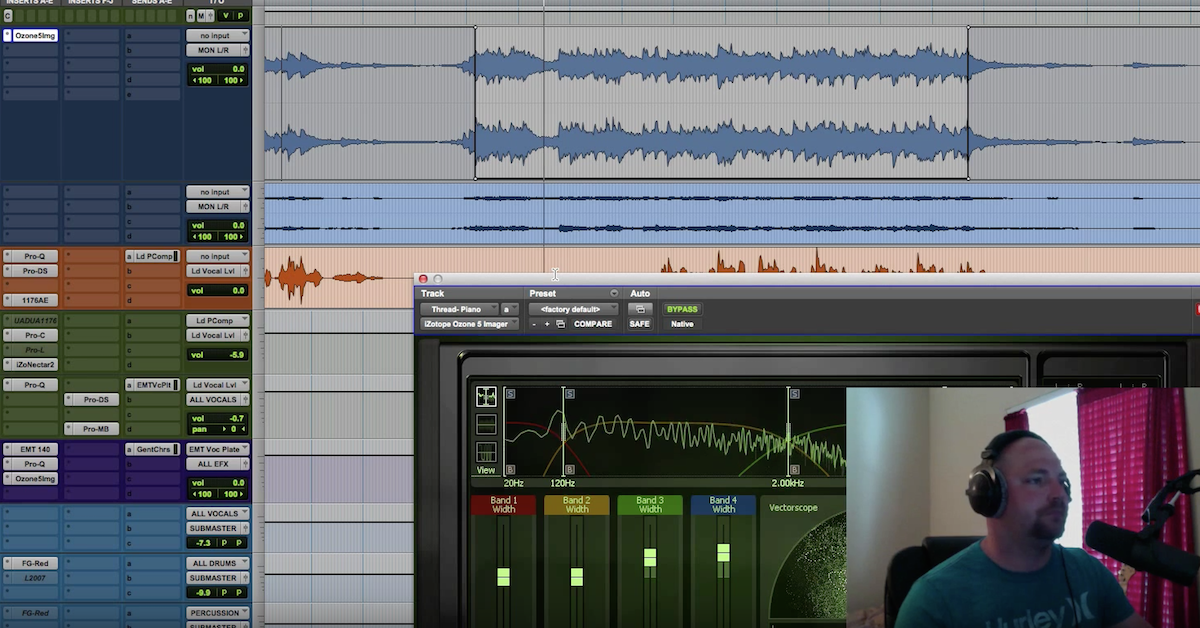6 Tips for Producers Mixing Instrumentals
Article Content
It’s been less than a week since my tutorial on mixing rap vocals came out. I’m already receiving emails and tweets asking me to do a similar video on how to mix beats. Well, there’s a distinct possibility that may happen. Until then, this article should do well to get the Hip-Hop producer on the right track.
If you’re a beatmaker looking to improve your own mixing, this article is for you.
When mixing, remember that less is more. Ideally, the perfect arrangement and sound selection will need very little processing.
If you feel like you need a ton of stuff to make your drums hit, your synths growl, or your bass move, you might need to go back to the drawing board and find some better sounds. But let’s suppose you have strong sounds on deck and you just need them to fit together.
1. EQ Is for Conflict Resolution. It’s the Referee.
Any decent sound sample should sound good on it’s own.
EQ comes into play when you hear the sounds in context of the other sounds. You might love the sound of your piano, but when you pull the piano up, you suddenly don’t hear the snare so well.
When this happens (and only when it happens), the referee steps in to decide who belongs where.
Maybe the snap of the snare is more important than the plink of the piano in this track? Maybe the piano really functions best as something that fills out the lower midrange and provides fullness to the track. If that’s the case, you can use the EQ to say: ok, piano, back off your upper-midrange and give the snare some room to cut through. It’s all about where things function best for the song.
The key here—that I think most producers stumble with—is that you want to think in terms of subtraction.
Most producers in the situation above will think, “ok, I need more upper-mids in the snare to make it cut.” No, you don’t, you’re just going to end up with a track that’s piercing and hard to fit vocals into. What you really want is less upper-mids in the piano, so that the upper-mids that are already in the snare drum are easier to hear.
Not to say that you don’t ever want to boost with an EQ, but the thought process for that is more about general tonality of the instrument, not mixing function.
2. 808s: Tune Up
808 kicks tend to trip people up.
Here’s the secret: If you turn your 808 up and it doesn’t sound good, then it’s either not tuned right or it’s the wrong 808 sound to begin with.
Not to say there aren’t ways to process 808s, but if the 808 isn’t good to begin with, you are seriously barking up the wrong tree.
3. Assign an Image
Don’t just think of your record as a piece of music. Think of it as a sonic universe.
If everything is forward, dry, and center, you’re living in a small world. All you need is one sound that sounds far away, one sound on the left, one sound on the right—and not even at the same time necessarily—and suddenly your world is huge. Not to say that there aren’t records that are great that aren’t particularly wide and don’t have much front to back depth, but generally these things will create a bigger sound.
4. Back It Off
Once you do your mixing—however you choose to process things—go back in and see how much you can back things off.
Can you back that 4dB cut on the piano down to a 3dB cut and still retain the sharpness of the snare? You used heavy compression on the kick—can you back off the ratio or slow the attack down any more?
5. Don’t Make It So Loud
One thing producers often fight with is making the record super loud.
Here’s how you make a record super loud: don’t. Seriously. Take it from the guy who works the SSL to audition tracks for the artists you want to place records with.
When I pop the record on, the first thing the artist does is say “turn it up.” There’s enough wattage going through those speakers that I could disintegrate a cinder block with a kick drum. Trust me, loudness is not an issue.
Conversely, if you squash and distort the record trying to make it loud, the artist is simply not going to ask me to turn it up as much. It’s going to be the same level of playback as the last track, but with less punch and more annoying distortion. The only time loudness is helpful is for producer competitions, and even then, there’s a limit.
6. Inspire the Vocalist
This the most important thing in the world.
Your success as a producer is about 80% dependent on whether or not an artist feels inspired to write to your tracks.
That means that when you mix, think like a vocalist. Can you hear your voice in the track or are the instruments too overwhelming? Does the track give you that head nod feeling? Is there enough movement, drops, and is that lead line up enough to give the track a unique identity? Artists feed off of energy, so make sure the record is delivering.
For more in-depth information, I have articles on using reverb, compression and EQ.
Feel free to leave a comment or ask a question in the comment section below.






